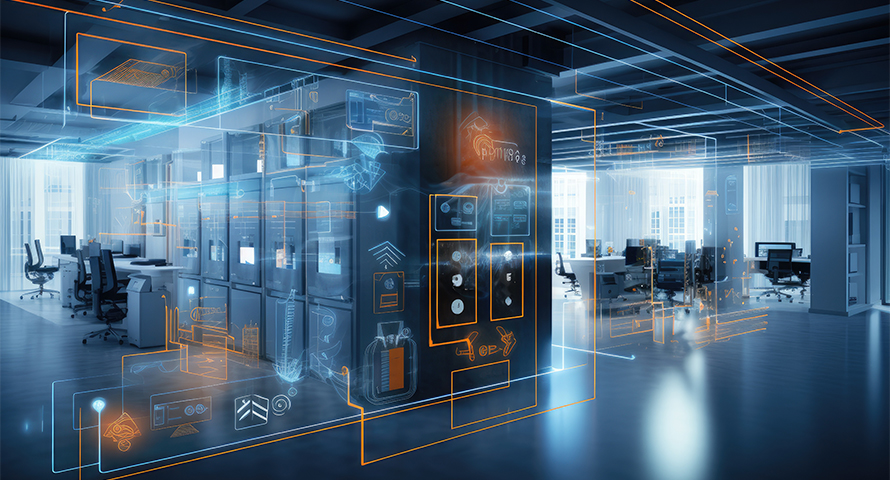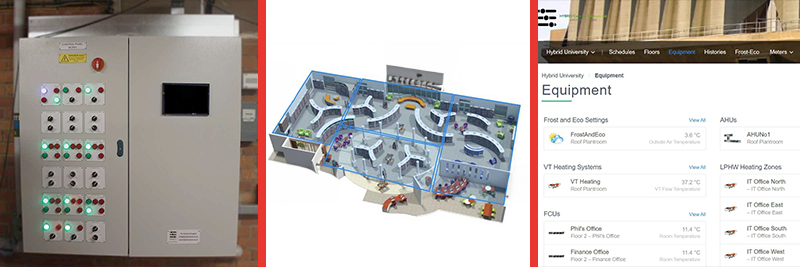- 01535 652338
- mail@watsonsbs.com

Path to Net Zero: How AI Saves Energy
In the ever-evolving landscape of modern building infrastructure, the integration of Artificial Intelligence (AI) has become a key part of the plan on the path to net zero. The technology itself is inherently designed to improve productivity, relieving humans from time-consuming, repetitive tasks and providing a consistent level of accuracy.
Back in February, we took a look at how recycling, regulation and renewables in planning and constructing buildings and their services, such as Mechanical and Electrical (M&E). The fusion of AI with building systems promises not just technological advancement, but also tangible benefits for sustainability and efficiency.
As we learned previously, commercial and industrial buildings account for a large share of global energy consumption, and wastage is a significant part of that issue - for example where energy is being consumed in rooms that are not occupied. Because commercial buildings are large and host occupants with a wide range of energy needs, a lot of wastage will occur without a fully smart Building Energy Management System (BEMS) controlling energy usage in real time.
The synergy between AI and BEMS creates the ideal solution to these issues. The ability to monitor, analyse, predict and react in real-time to data in large or multiple buildings means individual rooms or buildings are consuming only the energy they need. Below are five key ways the use of AI in BEMS can achieve this:
- Smart HVAC Systems: AI-powered heating, ventilation, and air conditioning (HVAC) systems can optimise temperature control based on occupancy patterns, weather forecasts, and real-time data. By adjusting settings dynamically, these systems minimise energy waste while maintaining occupancy comfort levels.
- Predictive Maintenance: AI algorithms can analyse data from sensors and equipment to predict when maintenance is needed. By identifying potential issues before they escalate, maintenance can be performed proactively, preventing energy inefficiencies caused by equipment failures or malfunctions.
- Energy Usage Optimisation: AI platforms can analyse historical energy consumption data and identify patterns and trends. This information enables building managers to optimise energy usage by scheduling operations during off-peak hours, adjusting lighting and HVAC settings, and implementing energy-saving measures
- Occupancy Monitoring: AI-powered sensors can track occupancy levels in different areas of a building. By understanding occupancy patterns, building systems can adjust lighting, heating, and cooling accordingly, reducing energy consumption in unoccupied or underutilised spaces.
- Renewable Energy Integration: AI can optimise the integration of renewable energy sources such as solar panels or wind turbines into building systems. By forecasting energy production and consumption patterns, AI can ensure efficient utilisation of renewable energy resources while reducing reliance on traditional power sources.

(Credit: Hybrid Controls)
The incorporation of AI-driven solutions holds the key to unlocking unprecedented levels of energy efficiency in commercial and industrial buildings, but it should be integrated to help human building management teams rather than be over-relied on. Our fully scalable systems also include easy-to-use screen interfaces that provide a clear visual data representation for every room or space, and multiple tools for reporting, logging and retrieving historical data, enhancing and augmenting the role of human building managers.
The advantages of our BEMS solutions are not just focused on achieving net zero. The cost savings are significant, with lower energy bills and reductions in taxes on carbon emissions. Furthermore, the ability to detect and instantly notify issues reduces downtime, and with smart environmental controls such as HVAC and lighting, the health and well-being of occupants are enhanced.
By leveraging the power of artificial intelligence, buildings can operate with unprecedented efficiency. As we continue to develop more efficient M&E solutions, integrating with AI-augmented BEMS allows us to optimise energy usage, reduce waste, and ultimately contribute to a more sustainable future.

